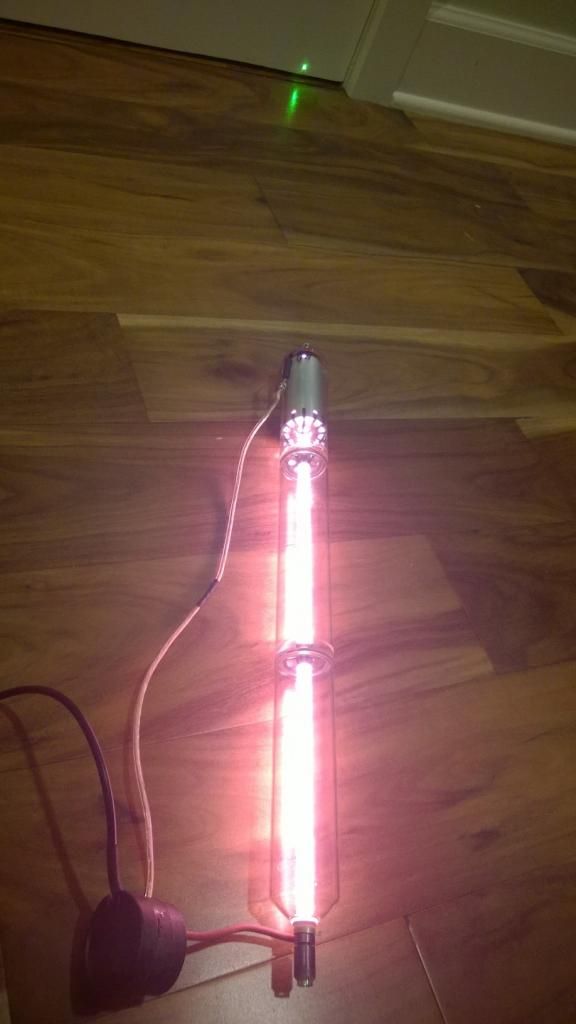- Joined
- Mar 29, 2013
- Messages
- 1,221
- Points
- 63
hey guys!
I have been wanting to get into gas, so i bought a 3.4mw 543nm HeNe off of hwang21.
The tube needs 2800v @ 6.5 ma
So i bought a DJT-28-00 PSU
2600 - 3200v
>10kv startup
I set everything up like this:

The PSU has a built in 5 second delay, so i plug it in, wait five seconds
and i hear a soft *click* presumably the startup voltage.
Then, nothing..... The tube doesn't flicker or anything!
Any way i can test it or GET IT TO WORK PLS?
Thanks
-Matt
I have been wanting to get into gas, so i bought a 3.4mw 543nm HeNe off of hwang21.
The tube needs 2800v @ 6.5 ma
So i bought a DJT-28-00 PSU
2600 - 3200v
>10kv startup
I set everything up like this:

The PSU has a built in 5 second delay, so i plug it in, wait five seconds
and i hear a soft *click* presumably the startup voltage.
Then, nothing..... The tube doesn't flicker or anything!
Any way i can test it or GET IT TO WORK PLS?
Thanks
-Matt
Last edited:






